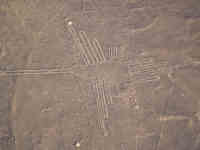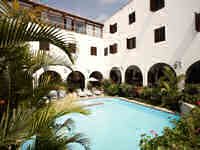Peru: More than Machu Picchu
With July marking the 100th anniversary of the rediscovery of Peru’s well-trodden Inca site Machu Picchu, Ruth-Ellen Davis shuns the clichés and unearths the insider info on this diverse South American destination.
Travel to Peru: What to see
Fiction: Peru’s only real attractions are Machu Picchu and the Inca Trail.
Fact: Peru might be known as the land of the Incas, but over 50% of the country is carpeted with Amazonian greenery and national reserves. A 40-minute flight from Cusco – the historic Inca capital, and pick-up point for most Inca Trail hikers – transports you to the steamy jungle surrounding Puerto Maldonado. This tranquil slice of the Amazon is particularly rich in birdlife and butterflies, and visitors to Rainforest Expeditions’ (www.perunature.com) three riverside eco lodges will learn much about the colourful jungle inhabitants from knowledgeable guides. Activities include night-time river cruises, sunset kayaking, foot safaris and pre-dawn trips to watch rainbow flocks of macaws and parrots gather for morning feeds on the clay riverbank. Guests sleep side-by-side with the wildlife in bedrooms that have one wall completely open to the jungle, and the lush greenery can also be appreciated, pisco sour in hand, from one of many hammocks strung up around the wooden lodges. One of the lodges, Tambopata Research Center, is home to a team of researchers that monitor the area’s macaws; guests can learn about the project with after-dinner lectures and daytime excursions into the jungle to weigh and measure the macaw chicks.
Travel to Peru: Sample ancient culture
Fiction: Machu Picchu is the only archaeological site worth seeing.
Fact: Peru is brimming with ancient ruins and historical sites. Machu Picchu may be Peru’s iconic landmark but the country has much more to offer. A series of giant motifs and animal images known as the Nazca Lines are etched into the floor of southern Peru’s Nazca Desert; the geoglyths were created between AD400-650, and can be viewed today via light aircraft trips over the area.
 Peru's mysterious Nazca lines
Peru's mysterious Nazca linesiStockphoto / Thinkstock
Travel to Peru: Where to stay
Fiction: Peru’s accommodation is geared around backpackers on a tight budget.
Fact: Peru offers a twinkling array of stylish city hotels, beachside havens and luxury jungle lodges. Lima’s 5-star Miraflores Park Hotel (www.miraflorespark.com) basks in a prime position in the fashionable Miraflores neighbourhood. Guests enjoy far-reaching sea views, some of the best food in town at restaurant Mesa 18, and can shake off the jetlag with a shiatsu massage at the Zest Spa on the 11th floor. The wilds of the jungle can be enjoyed with plenty of creature comforts at Inkaterra’s Reserva Amazonica Lodge (www.inkaterra.com) in Puerto Maldonado. Listen to the plink-plonk call of the Oropendula bird from your own private plunge pool, and relish the rarest of all jungle encounters: hot showers. On the main square in Trujillo, Libertador’s dignified Trujillo Hotel (www.libertador.com.pe) courts high-end travellers with a generous breakfast spread, sizeable suites and a pleasant poolside patio fringed with flowers.
 Libertador’s luxury Trujillo Hotel, Peru
Libertador’s luxury Trujillo Hotel, PeruRuth-Ellen Davis
Travel to Peru: Where to eat
Fiction: If you go to Peru you will have to eat guinea pig.
Fact: Guinea pig (cuy) is a Peruvian delicacy, typically reserved for special occasions. Peru’s main cities are awash with international staples such as pizza and burgers. Those eager to delve into Peru’s more traditional flavours can sample such ingredients as fried plantains, an array of exotic fresh fruit, quinoa, huacatay (aromatic Andean herb), sweet potatoes, cerviche (strips of raw fish marinated in chilli and lime), yuka and sweet corn. For delicious trout cerviche yards from Lake Titicaca, head to Puno’s main square and take a seat at Mojsa. Traditional Peruvian dishes are given the fine dining treatment at several restaurants run by celebrated Peruvian chef Gastón Acurio: in Cusco nab a spot at Chicha – the Urubamba Salad with corn from the nearby Sacred Valley is delicious – and follow Lima’s hip crowd to Astrid y Gastón for high-design dishes and a dessert list compiled by Acurio’s wife Astrid.
Travel to Peru: Getting around
Fiction: Travelling around Peru has to involve hours spent on rickety buses.
Fact: Luxury trains and first-rate bus services make getting around Peru a pleasure. Glide through the mountains between Puno and Cusco on the luxurious Andean Explorer rail service run by Peru Rail (www.perurail.com). A three-course lunch, live entertainment including traditional panpipe music, and fantastic views from the Observatory Carriage at the rear of the train, make the 10-hour journey fly by. You can even learn how to make the perfect pisco sour at the Observatory Carriage bar.
 Glide through the Andes from Puno to Cusco
Glide through the Andes from Puno to CuscoRuth-Ellen Davis
Travel to Peru: Meet the locals
Fiction: If you don’t have family in Peru, you won't meet any locals.
Fact: Volunteer agencies such as Awaiting Angels (www.awaitingangels.org) place you in the heart of a Peruvian family. Awaiting Angels – a non-for profit venture run by a Peruvian family based in Cusco – places volunteers from all corners of the globe in 11 locations across Peru. Volunteers choose from an array of worthy projects that make a vast difference to local communities, from working in an orphanage, or caring for the elderly and children with disabilities, to teaching English, or working with farming communities and on conservation projects. Volunteers based in Cusco stay with a family in their home just outside the centre, and enjoy home-cooked meals, and a welcoming atmosphere in which to learn about Peruvian culture.
Do you have any Feedback about this page?
© 2025 Columbus Travel Media Ltd. All rights reserved. No part of this site may be reproduced without our written permission, click here for information on Columbus Content Solutions.









 You know where
You know where